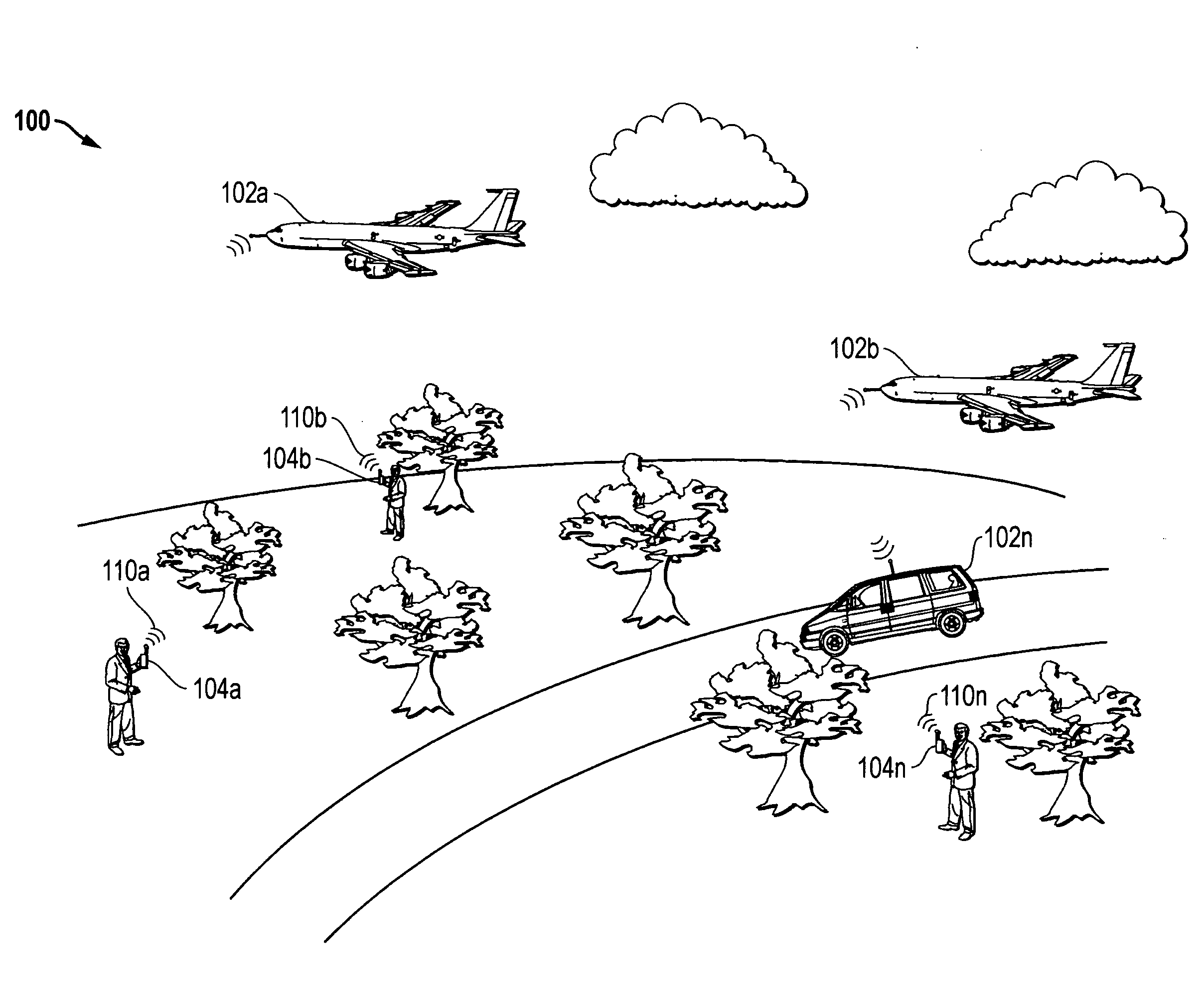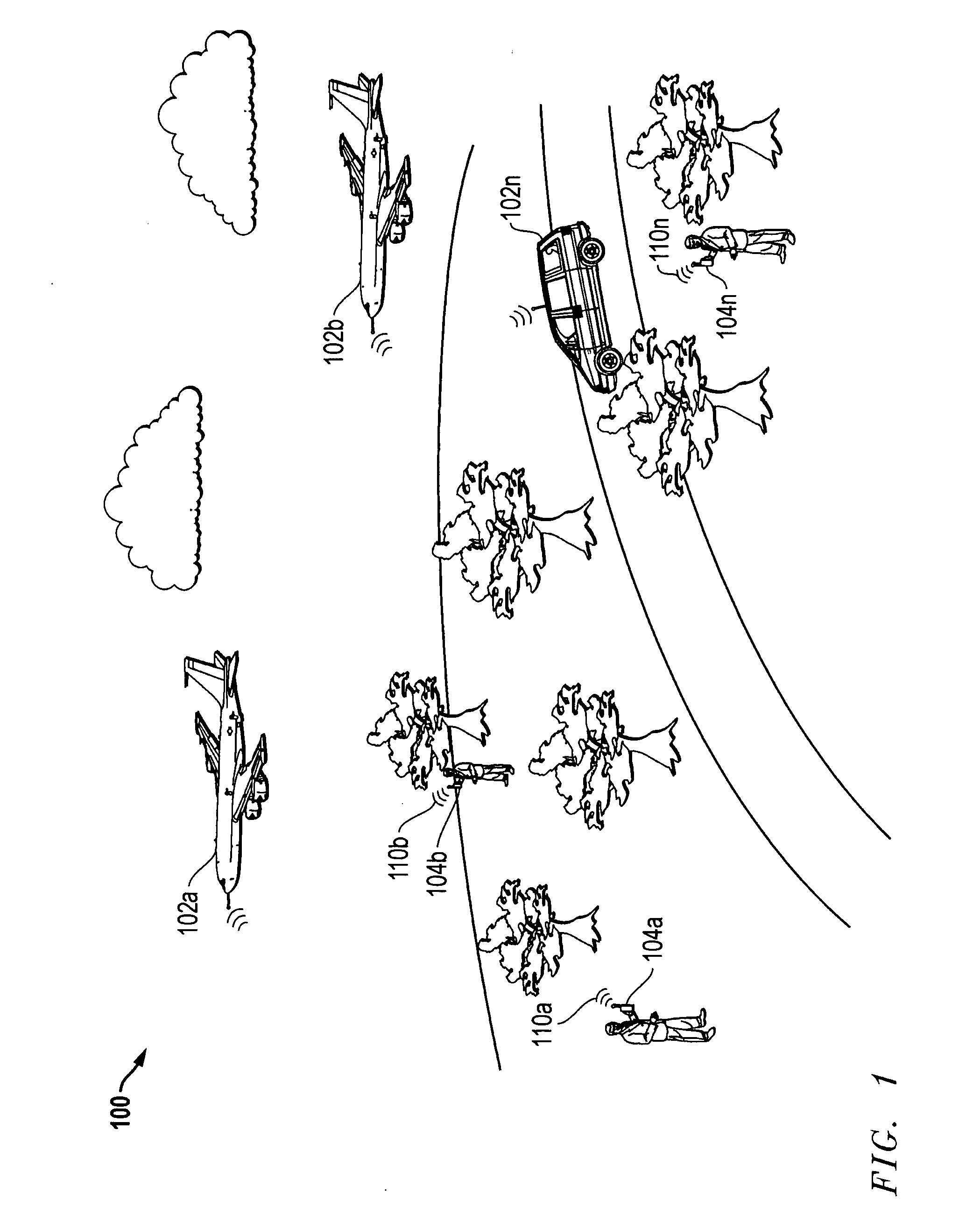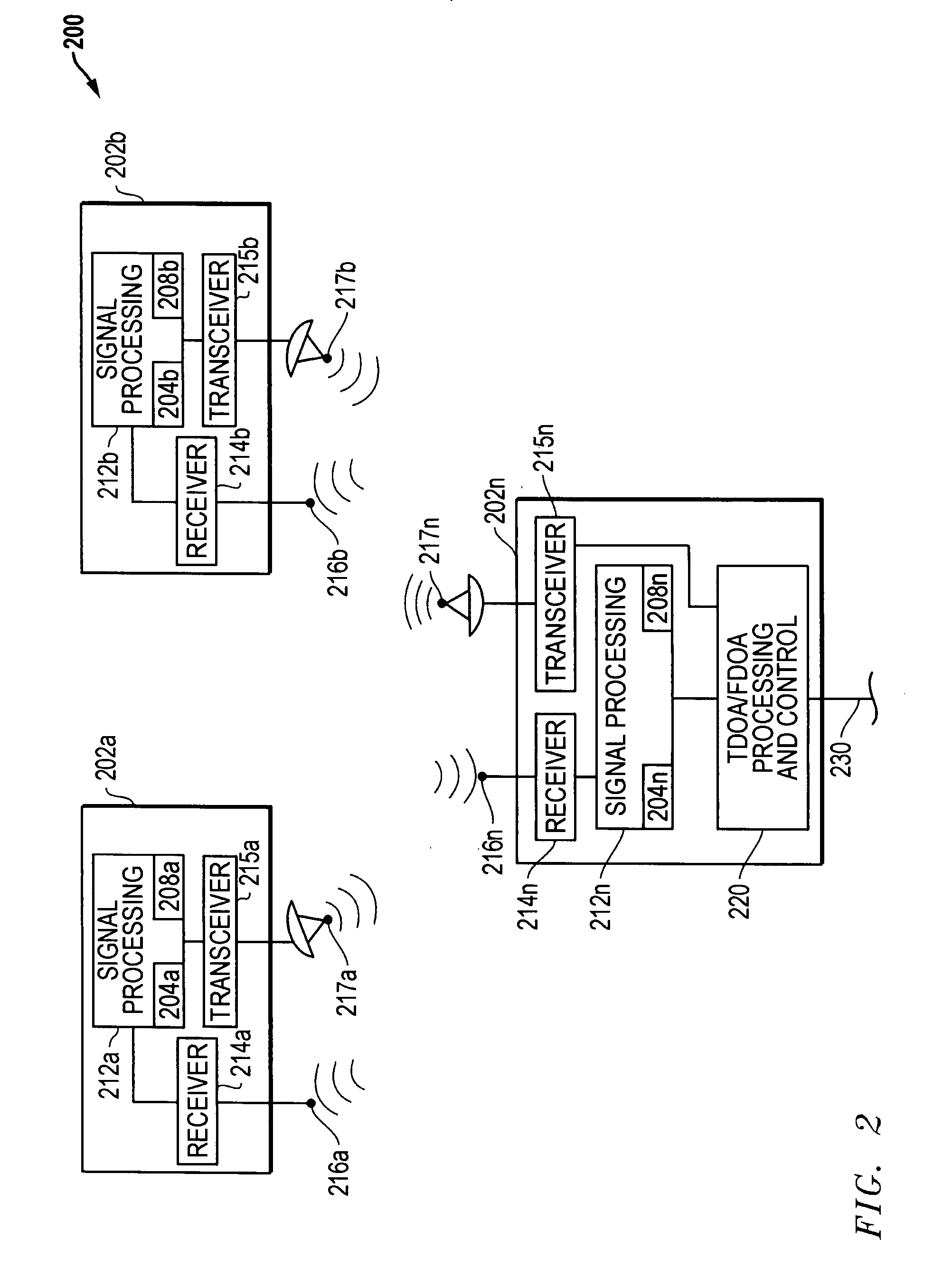Methods and systems for detection and location of multiple emitters
a technology of multiple emitters and detection methods, applied in the field of signal emission, can solve the problems of short up-time characteristics of ptt signals, insufficient detection time for most conventional single collection systems, and no solution or only invalid solution
- Summary
- Abstract
- Description
- Claims
- Application Information
AI Technical Summary
Benefits of technology
Problems solved by technology
Method used
Image
Examples
Embodiment Construction
[0017]FIG. 1 illustrates one exemplary embodiment of an RF emissions environment 100 (in this case a radio communication environment) in which multiple emitters in the form of PTT radios 104a and 104b through 104n are communicating in a radio communication network via respective RF signals 110a and 110b through 110n transmitted on a common frequency. In the illustrated embodiment, each emitter 104 is a ground-based mobile emitter (in this case a “walkie talkie” type radio) carried by a human being that is stationary and emitting from a fixed location. However, it will be understood that the disclosed systems and methods may be practiced in radio communication environments in which any type, number and / or combination of different types of emitters are transmitting on a common frequency including, but are not limited to, multiple base stations of a cellular telephone network, cell phone devices, multiple weather broadcast stations, radar signal sources, microwave sources, etc. Further...
PUM
 Login to View More
Login to View More Abstract
Description
Claims
Application Information
 Login to View More
Login to View More - R&D
- Intellectual Property
- Life Sciences
- Materials
- Tech Scout
- Unparalleled Data Quality
- Higher Quality Content
- 60% Fewer Hallucinations
Browse by: Latest US Patents, China's latest patents, Technical Efficacy Thesaurus, Application Domain, Technology Topic, Popular Technical Reports.
© 2025 PatSnap. All rights reserved.Legal|Privacy policy|Modern Slavery Act Transparency Statement|Sitemap|About US| Contact US: help@patsnap.com



